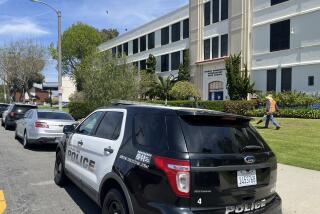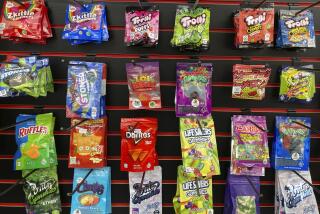Drug Abuse by Students on Downturn, Survey Shows
Drug use among elementary and secondary school students has declined over three years for most types of drugs, a San Diego County survey released Tuesday shows.
The proportion of students in the 7th, 10th and 12th grades who reported using marijuana once a month or more declined from 20% in 1985, when the last survey was conducted, to 15% as of last spring. Similar decreases were found for regular use of amphetamine and cocaine.
Among high school seniors, 19% said they had used cocaine at least once, down from 32% three years ago.
The $15,000, anonymous poll of 3,484 students in those three grades--and of 1,116 students in the fourth grade, who reported virtually no regular drug use--was conducted by the county Office of Education, the San Diego Unified School District and the county Department of Drug Abuse Services.
“It’s encouraging to see that student drug use has been reduced, but there’s still reason for concern,” county Supt. of Schools Thomas C. Boysen said. “Drug use among children is still a serious problem.”
Boysen said about 5,000 7th-, 10th- and 12th-graders use marijuana once a week or more; 2,000 use amphetamines, and 1,400 use cocaine that frequently. There are 71,000 county students in the three grades, said survey architect Jack W. Tierney of the Office of Education.
Tierney credited student assemblies and in-class education, along with negative publicity, for the drop in abuse of illegal drugs. He noted, however, that alcohol use is up slightly: 66% of seniors reported drinking once a month or more in last spring’s survey, up from 61% in 1985.
The survey reached 5% to 6% of the targeted grades, or 600 fewer students than in 1985. Tierney said some districts declined to participate because their students had recently completed similar surveys.
Tierney said the survey was regionally, racially and economically representative of the county’s student body. He is developing a regional breakdown of the results, which he predicted would show roughly the same responses from area to area.
Boysen endorsed the report’s recommendations to continue a range of tobacco-, alcohol- and drug-education programs and public anti-drug statements.
He also called for a countywide expansion of addiction treatment for adolescents and for keeping strict school penalties for drug and alcohol use. Tierney pointed out that 57% of 10th- and 12th-grade students said they approve of having narcotics officers work undercover in schools.
Adults should be made more aware of their influence on the behavior of children, Boysen said, adding that 49% of student marijuana users said they knew adult users well, whereas only 19% of non-users said they knew adult users well.
More to Read
Sign up for Essential California
The most important California stories and recommendations in your inbox every morning.
You may occasionally receive promotional content from the Los Angeles Times.










